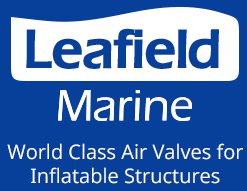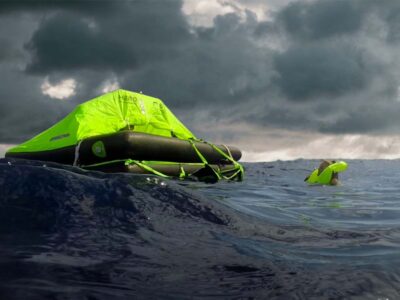Life rafts are an essential piece of safety equipment in vessels of all kinds. When considering the different options available for your application, you are likely to come across two main categories: commercial life rafts and leisure life rafts.
In this article, we explore the key differences between these two types of marine rafts so you can choose one that meets the needs of your application and your customer’s intended use.
Download Our Latest Air Valves Brochure
1) Uses, purpose, and capacity
Both commercial and leisure life rafts are built for survival purposes, but there are some differences you need to be aware of.
To start with, a commercial-grade life raft can be used for a variety of commercial purposes, ranging from fishing to passenger trips, and including larger commercial enterprises. This means they have a higher capacity than leisure rafts, with some being able to accommodate upwards of 100 people.
On the other hand, leisure life rafts are usually designed to accommodate 4 to 8 people, although some may have a higher capacity of up to 25 people. The raft capacity is in line with their intended use and purpose, which are recreational trips.
2) International standards and equipment
Commercial life rafts are designed to get approved or certified to the relevant international standards, which in this case means SOLAS approval. SOLAS specifies a number of requirements each raft must meet, which includes but is not limited to:
- Depth of water in which the raft can be safely immersed.
- Inclusion of a canopy for extra passenger protection.
- The speed at which the raft can be safely towed.
- The inclusion of a hydrostatic release unit.
SOLAS life rafts must also be equipped with an emergency pack, which is available in two versions.
- Version B, which means the raft must have all standard equipment, plus waterproof flashlights and light bulbs, distress signals, water storage bag, thermal protective equipment, a first aid kit, a spare anchor, etc.
- Version A, which means the raft must have all standard equipment and Version B features, plus drinking water, food rations, a fishing kit, and three different types of distress signals.
Moreover, commercial life rafts are designed for the ISO 15738 standard, which specifies the international requirements for high-performance and reliable gas inflation systems in life saving equipment.
On the other hand, leisure life rafts are designed for the ISO 9650 standard, which is specific to the technical and performance specifications recreational life rafts must have, especially regarding buoyancy, resistance, stability, inflation systems, and visibility.
There are variations in this standard, depending on whether the raft is meant to be used in offshore or in coastal trips, plus a further compact category, which is the smallest and lightest type of leisure life raft. You can read the full ISO specifications here.
3) Price
The higher specifications and capacity of commercial life rafts come with a higher price. In addition to the cost of purchase, it’s also important to factor in maintenance expenses, which will be higher if you go for a commercial life raft. Leisure life rafts tend to be cheaper than commercial rafts, but they don’t suit all purposes and capacity requirements.
Find Out More
At Leafield Marine, we manufacture and supply a range of valves and Gas Inflation Systems used on leisure and commercial life rafts. Our components come with approval for use in ISO 9650 leisure life rafts, as well as the ISO 15738 standard for commercial rafts. To discuss your requirements with one of our design engineers, please call 01225899550 today.
Spares & Repair
For all our GIS and GIST spares please visit our online store by clicking here.

